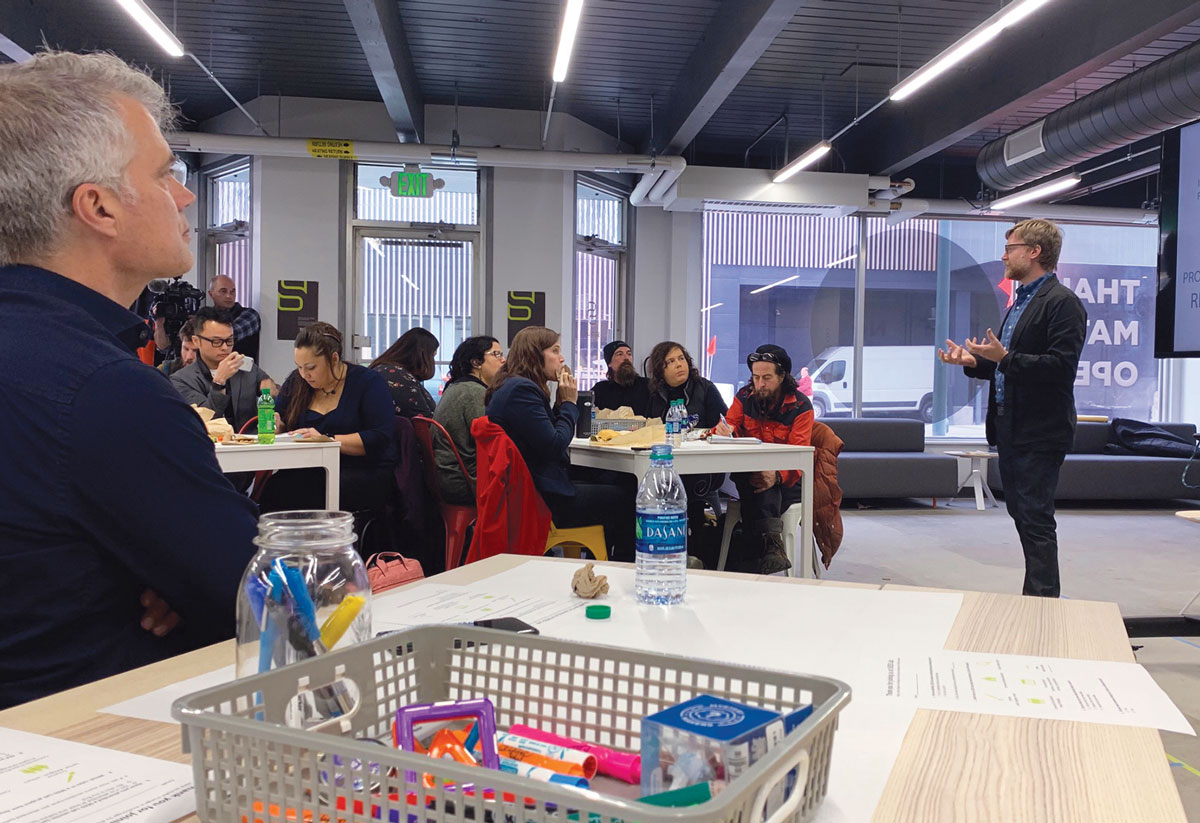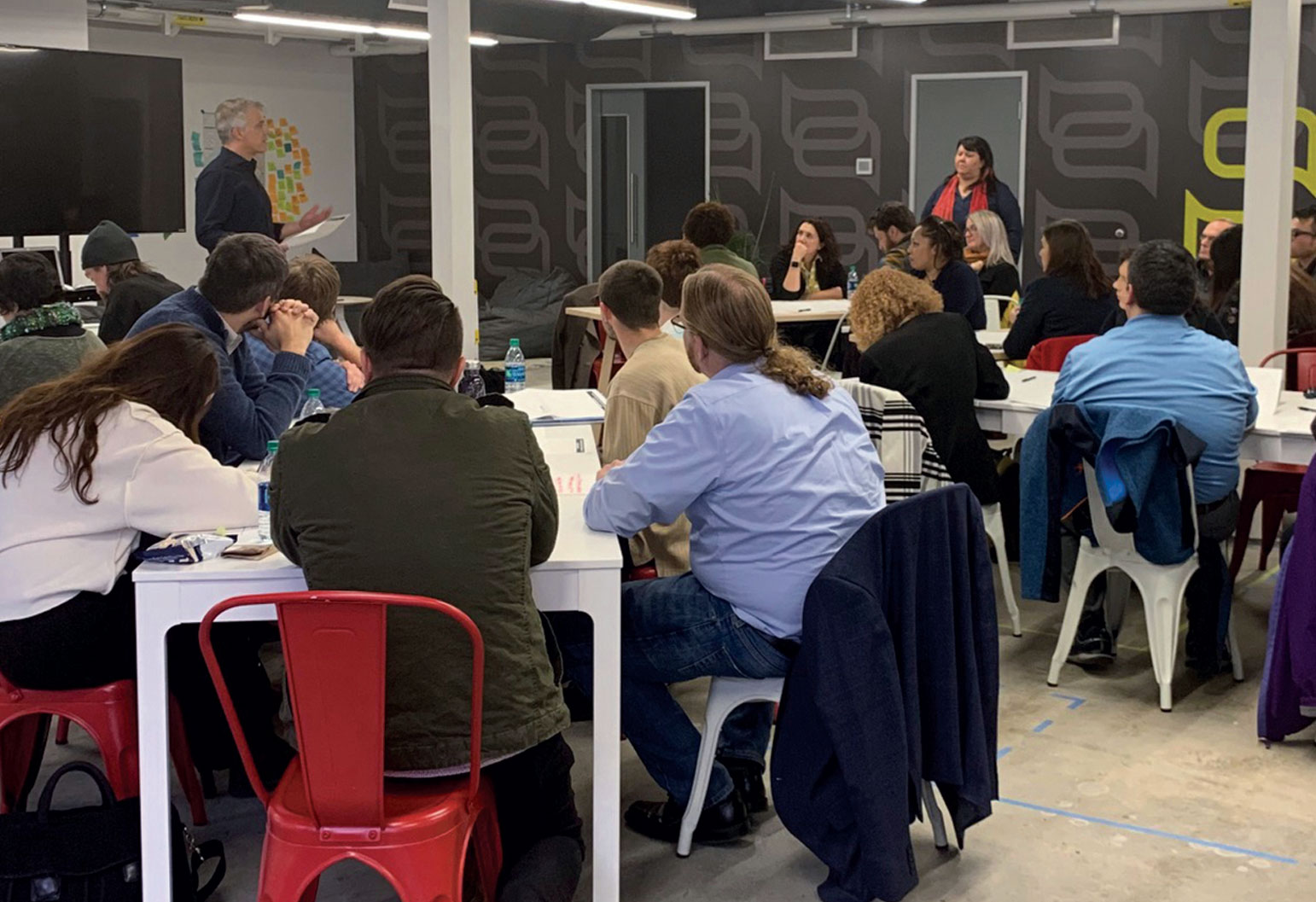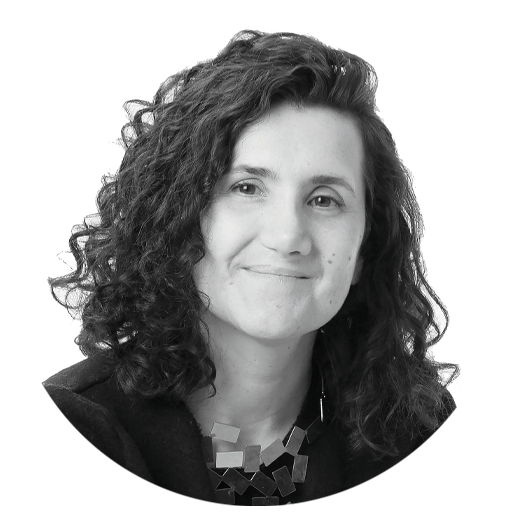Photos courtesy of Stantec
he scenery was bold and breathtaking. The snow-covered mountains surrounding the city of Anchorage, Alaska, could not have contrasted more from my warm Mediterranean hometown of Genoa, Italy. It was January 27, 2001, and I came to the United States as an intern at an Alaska architecture firm.
Before leaving Italy, I consulted a map of Anchorage and chose a neighborhood to live in that looked to be within walking distance of downtown and my new office.
I soon discovered that “walking distance” was not a real thing in Alaska, with its cold winter days, prolonged darkness, ice-covered sidewalks and—most times—no pedestrian paths.
My commute was a mile each way. The very first week, I couldn’t help but notice the many people experiencing homelessness. One morning, I counted 10 people during my 20-minute winter walk: some on street corners, one laying on the side of the street, a couple sitting on a curb by a transformer sharing beers out of paper bags.
Data confirms that the homeless population in Alaska has held steady for the last 10 years with about 2,000 people statewide. While this number may not compare to states with the highest rates, such as New York, Hawaii, Oregon, California and the District of Columbia, the situation warrants consideration. I felt compelled to move from citizen-bystander to active participant in a possible solution.
I recently joined the Housing, Homeless and Neighborhood Development (HHAND) Commission at the Municipality of Anchorage. The purpose of the commission is to advise on initiatives associated with long- and short-term housing and various issues related to homelessness. This opportunity proved eye-opening.
Since becoming involved with HHAND, I have learned a great deal about the complexities of coordinating the efforts of the municipality, activists and agencies like the Anchorage Coalition to End Homelessness. This agency has developed a three-year plan to make homelessness in Anchorage a “rare, brief and one-time event.” As an architect, mother and community member, I am looking forward to contributing my expertise to the conversation, including my experience with land use, code and design.
According to the US Department of Housing and Urban Development (HUD) annual report, in 2019 there were more than half a million people experiencing homelessness in the United States. The U.S. is a diverse country in terms of climate, culture, population, urban and rural density, connectivity and landscape. In Alaska, our climate and latitude yield a myriad of physical and psychological factors that add to the difficulties associated with the lack of infrastructure. Improving access to resources and essential services to meet basic needs can be the next step in accelerating the transition from being homeless to finding temporary and, ultimately, permanent housing.
Collecting real-time and by-name data is important to tailor solutions specific to each community across the nation. Movements like Built for Zero involve more than 80 cities (including Anchorage) in the U.S. and nearly 50 international cities. These communities have committed to collecting comprehensive data with the goal of understanding tangible information about participants experiencing homelessness.
Almost 70 percent of the homeless population consists of individuals. The other 30 percent comprises families with children. The sample data has become more specific in identifying subcategories such as youth under 25 and living on their own, veterans, the chronically homeless, and people with disabilities. The more data we have, the better we can brainstorm solutions.


I recently participated in a workshop on homelessness hosted by the Anchorage Museum, facilitated by community leader Michael Fredericks. The workshop included activists, providers, designers and people who have experienced homelessness.
My main takeaway was that homelessness is more than a housing problem.
Home is not just a tangible space: it is roots, identity, safety, family and a place of physical and emotional wellness. Not having a roof over your head is not a defining trait; it’s a circumstance that can be positively altered.
While the dictionary does not yet include the word “houselessness,” this term serves as a more accurate description, indicating the lack of a physical dwelling while maintaining the dignity of having a “home,” i.e., family, village and/or cultural identity.
Most communities are experiencing a shortage of low-income housing, resulting in evictions and home insecurity. This problem is intensified by the need for services and programs.
HUD has identified a community plan to provide housing and services, which includes distinct phases from emergency shelter and immediate safe harbor from street living to transitional housing and related services, such as re-establishing an active role within the community and finding permanent affordable housing.
From a design standpoint, there are two main factors to consider:
- Planning and zoning
Planning and zoning play a critical role in addressing affordable housing challenges. Land use and permitting authorities can provide a framework that promotes the development of temporary and permanent units connected to a robust infrastructure and in proximity to services and job opportunities.
- Building code
The building code regulates how to design a safe space for both temporary and permanent housing.
These two factors are critical, and they interact simultaneously. With these in mind, many communities in the U.S. have experimented with creating temporary villages using tiny homes, or housing pods, along with centralized services. The purpose of these villages is to bring dignity and individuality to those in need.
My Texas colleagues at Stantec provided services to design the Community First! Village in Austin, Texas. It consists of a 27-acre master-planned development with the goal of supporting the chronically homeless population and providing affordable, sustainable housing. The village incorporates a medical facility, community market, walking trails and more than six acres of organic and sustainable farming. Residents share laundry and restroom facilities and a communal kitchen, while the 120 units provide bedrooms, electric utilities and basic kitchen essentials. This effort has created an organic, integrated and supportive space that is helping people rejoin society. By making community the priority, Community First! Village is improving the lives of their formerly homeless residents, building self-determination while restoring dignity and hope.
I recently learned about another success story in Oregon: the Kenton Women’s Village, which started as an experiment by 14 women living in 8-by-12-foot pods designed under the leadership of the Portland State University School of Architecture. The pods from the original village were relocated to a new site hosting additional pods donated by local contractors. The new village has sewer service, water, and electricity and provides a temporary space for participants to prepare for the next phase.
Almost 20 years have passed since my first pedestrian commute in Anchorage. Homelessness is still a very visible issue. Oftentimes I have found myself calling the local Community Patrol to help a person who appears to be in some form of distress. While these calls may have helped some individuals, I was still just an observer. I felt compelled to learn more about the bigger picture and be proactive in contributing to solutions.
I read a lot of statistics about the issue of homelessness. Behind these numbers are people whose stories we need to listen to and understand. While resolving the issue of homelessness is complex and embraces several agencies and types of expertise, it is a solvable problem. It takes a combined effort in each community to create real change. We need people from different paths of life—planners, providers, social workers, those who have experienced homelessness, even architects—to come together to create change.
Each one of us can contribute to the homeless dialogue in a meaningful way, bringing experiences and expertise to the table. My observations and suggestions are just the tip of the iceberg, and I know there are so many more success stories, learning curves and data I have yet to explore.
The quality of life of each human being is dependent upon the community’s support and cooperation. These links are helpful resources if you want be involved:
National Alliance to End Homelessness: endhomelessness.org
Built for Zero: joinbuiltforzero.org
Now is the time to engage in meaningful discussions and to turn those discussions into actions.

Giovanna Gambardella is a principal architect for the top 10 global design firm Stantec and is based in Anchorage, Alaska. Gambardella is truly passionate about architecture and design; her design strengths stem from a holistic approach that includes stakeholder vision, program, space planning and materials selection. She has designed buildings all over Alaska. A native of Italy, she has studied and practiced in Italy, Spain and Guam.
Giovanna Gambardella is a principal architect for the top 10 global design firm Stantec and is based in Anchorage, Alaska. Gambardella is truly passionate about architecture and design; her design strengths stem from a holistic approach that includes stakeholder vision, program, space planning and materials selection. She has designed buildings all over Alaska. A native of Italy, she has studied and practiced in Italy, Spain and Guam.